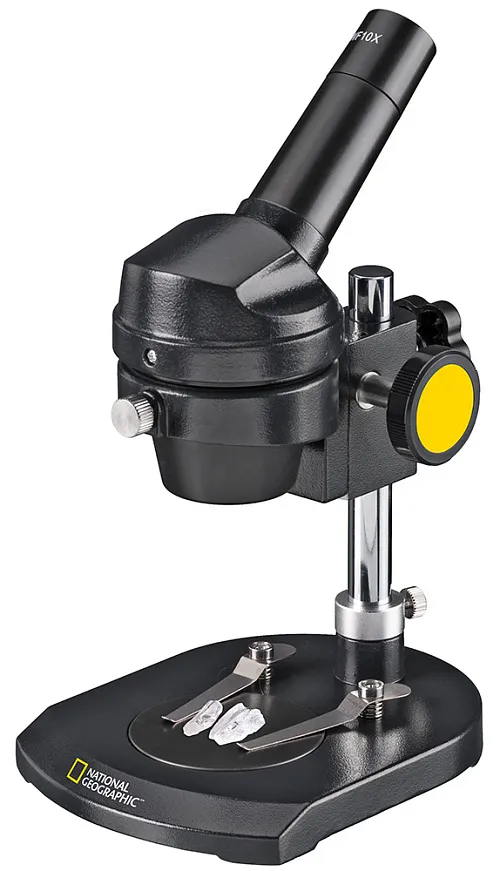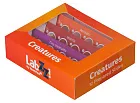Bresser National Geographic 20x Microscope, monocular
Monocular Microscope. Magnification: 20x
| Product ID | 74784 |
| Brand | Bresser GmbH, Germany |
| Warranty | 2 years |
| EAN | 4007922059587 |
| Package size (LxWxH) | 28x19x12 cm |
| Shipping Weight | 1.73 kg |
The National Geographic reflected light microscope with 20x magnification brings you closer to the world of the microcosm! The compact and stable reflected-light microscope is a great starter device!
Thanks to the swiveling microscope head you can adjust the microscope so that you get the best alignment for the object to be viewed.
The very large working distance is very easy to adjust, so you can observe objects and specimens up to a size of 8cm. Included in delivery is a two-color object plate. The front is white, the back is black. This feature allows you to view very bright as well as very dark objects in a wonderful way! The contrast to the object plate represents the borders optimally.
The housing is made of metal, so the microscope is very stable on the table.
Features:
- Optical system: incident light microscope for viewing objects (e.g. coins, stones, leaves)
- Enlargement: 40–64x
The kit includes:
- Microscope
- WF10x eyepiece
- Bicolored object plate
- Hard case
- Operating instructions
| Product ID | 74784 |
| Brand | Bresser GmbH, Germany |
| Warranty | 2 years |
| EAN | 4007922059587 |
| Package size (LxWxH) | 28x19x12 cm |
| Shipping Weight | 1.73 kg |
| Type | light/optical |
| Microscope head type | monocular |
| Head | 360 ° rotatable |
| Head inclination angle | 45 ° |
| Magnification, x | 20 |
| Eyepieces | WF10x |
| Objectives | 2x |
| Working distance, mm | 35 — 80 |
| Stage features | black-and-white double-sided plate, with clips |
| Focus | coarse |
| Body | metal |
| Illumination | natural light |
| User level | elementary |
| Assembly and installation difficulty level | extremely simple |
| Application | elementary, school/educational |
| Research method | bright field |
| Pouch/case/bag in set | case, dust cover |
We have gathered answers to the most frequently asked questions to help you sort things out
Find out why studying eyes under a microscope is entertaining; how insects’ and arachnids’ eyes differ and what the best way is to observe such an interesting specimen
Read this review to learn how to observe human hair, what different hair looks like under a microscope and what magnification is required for observations
Learn what a numerical aperture is and how to choose a suitable objective lens for your microscope here
Learn what a spider looks like under microscope, when the best time is to take photos of it, how to study it properly at magnification and more interesting facts about observing insects and arachnids
This review for beginner explorers of the micro world introduces you to the optical, illuminating and mechanical parts of a microscope and their functions
Short article about Paramecium caudatum - a microorganism that is interesting to observe through any microscope























